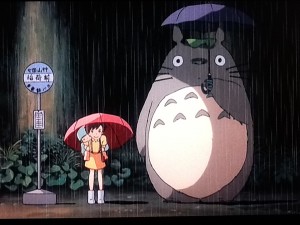So, gamification is all the rage these days. It was all over GDC 2011 and seems to be the in-thing. In case you haven’t heard about it, take a gander at the vid below. It’s a short and simple explanation of gamification’s pros and cons. Full link here: video at escapist magazine.
Gamification is an interesting idea that will likely affect just about everyone in some way in the coming years. But, before we all go sticking awards and levels on everything, let’s be sure we understand why it works. It works because of the way our brain is wired and it has a lot to do with the theory of Flow.
So what’s flow? Glad you asked! Flow is when you become so totally engaged in an activity that you tune out the rest of the world. It’s when time becomes distorted – both slowing down and flying by at the same time. It can occur anywhere with almost any activity. Heck, I’m in flow right now, writing this post and maybe you’re in flow reading it. Flow occurs while snowboarding, playing chess, reading books, being intimate, and especially when playing a great video game.
Ahh… video games. Our favorite subject. So, this guy, Mihalyi Csikszentmihalyi, researched flow for more than 25 years. (That’s a lotta nuts!) With all that research, he concluded that Flow was extremely important in both work and in play. In his view, flow is an essential part of a fulfilled life. Remember the cliche that money doesn’t make you happy? Well, science shows that to be true. But, did you know that people who have a lot of flow in their daily lives ARE happy? And, what’s more, Flow is mega important in games. Maybe the single most important theory for game designers.
In a nutshell, you need 4 things for flow:
- clear, achievable goals
- meaningful feedback
- a challenge that is balanced with skill
- minimal distractions
When you have all 4 of those, you’re well on your way to finding flow. It’s true at work, on the slopes, when killing the last boss on that epic raid, and yes, even when trying to get 3 stars in the latest Angry Birds level.
Now. Â Think back to gamification. Most of gamification is really just another way of addressing #1 goals and #2 feedback. Heck, that’s half of Flow, right there. Level meters, reward popups, and all that jazz are really just ways to 1) make the goals clear and 2) give better feedback about how you’re doing. It’s that simple. It’s not about the glitz, or the glam. It never has been.
So, that’s gamification. It works for the same reason that good games work. So, learn from gamification and make your games better.
(Thanks to my good friend for the Escapist link)
—–
My kids heard me talking about gamification and immediately pointed out that their whole life has been gamified. My son gets ‘quests’ to get a soda from the garage and as a reward, he earns faction modifiers. Being rude earns the little ‘minus-minus’ gesture over mom’s head (think the Sims!). While, being kind earns the ‘plus-plus’. The kids ‘level up’ when they use a new real-life skill. Just the other night, right in the middle of a fade-to-white transition in a movie, my son stood up and announced that the ‘free mode’ just ended – please buy the ‘pro’ version to continue.

